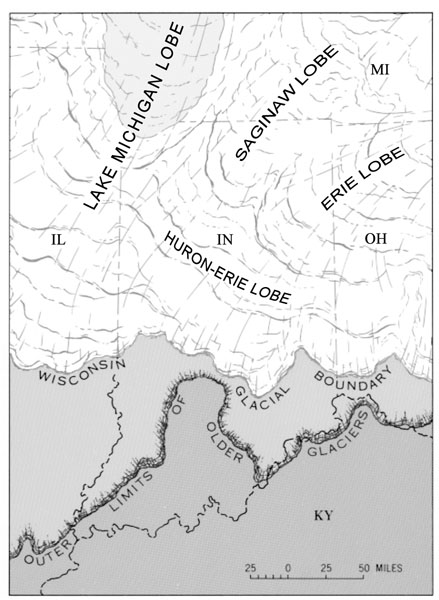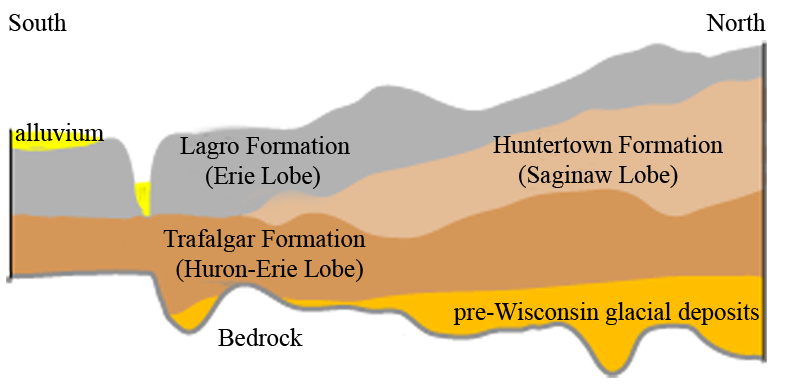 Figure 1.
Figure 1. Diagram showing origin and distribution of glacial lobes in the upper Midwest. Modified from Bleuer (1974).
Unconsolidated sediments of
 Figure 2.
Figure 2.Cross section showing the relationship of the Lagro Formation (Erie Lobe), Huntertown Formation (Saginaw Lobe), and Trafalgar Formation (Huron-Erie Lobe). Modified from Fleming (1994, Plate 3, Inset 1).
Deposits are considerably thinner in southern and eastern Allen County, and are almost entirely eastern source sediments deposited during the late
Wisconsin. In addition to sediments deposited in direct association with glacial ice, a variety of postglacial deposits are also present, as are
extensive bodies of
References:
Bleuer, N. K., 1974, Geologic story of Pokagon State Park–legacy of Indiana's Ice Age: Indiana Geological Survey State Park Guide 1.
Fleming, A. H., 1994, The hydrogeology of Allen County, Indiana–a geologic and ground-water atlas: Indiana Geological Survey Special Report 57, 111 p.


